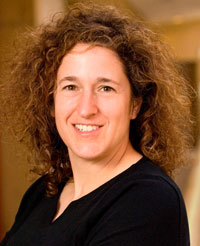|
Susanna Loeb — is a member of the CALDER management team and oversees the study of New York schools as a CALDER Principal Investigator. She is associate professor of education at Stanford University and directs the University's Institute for Research on Education Policy and Practice. |
1. What were the differences, in terms of improving student learning, between teachers who took the more traditional route and those who went through Teaching Fellows or Teach For America?
We found substantially more differences within groups than between them. However, we did find that teachers who took alternative pathways initially did worse, especially, in elementary school reading—though they later caught up or outperformed other teachers. Overall, teachers who took the alternative paths tended to do better in middle school than elementary school and in math than English language arts compared with teachers who took the traditional path.
Of course, we’re not talking about all alternative paths into teaching. The ones we studied were highly selective, targeting elite colleges and universities, so their recruits had stronger academic backgrounds. Teacher surveys show that many more of the alternative-route teachers had taken calculus in high school and, in general, had taken higher-level math courses relative to traditional-route teachers.
You also have to pay attention to the context. If the schools being studied are having a hard time recruiting teachers with strong content knowledge, then a program such as TFA that is able to bring in teachers with these skills could have a more pronounced effect than you might see in schools that don’t have a shortage of these teachers. And the effects could differ across grades and subject areas in the same way.
2. Is one way of getting into teaching better than another?
Right now, we don’t know—so it’s good to have a decent number of options and the wherewithal to assess them.
Also, it’s worthwhile to have alternative paths because we need to recruit more teachers, especially for low-performing schools in high-poverty areas and in certain fields—special education, middle and high school science and math, and English as a Second Language. Having multiple paths into teaching pulls in more people. Alternative routes are less expensive and time-consuming for the candidates, though they cost the districts more. In many ways, these programs are a recruitment strategy, designed to place teachers in underserved or difficult-to-staff schools.
3. What lessons can we take away from the study?
What some of these alternative routes show is that you can recruit very able people into teaching. Does it solve the problem of low achievement in high-poverty schools? No. Teachers from the alternative programs we studied aren’t doing substantially better than teachers who went the traditional route. Still, it’s important that these alternative programs have demonstrated the ability to attract strong candidates.
The alternative routes show that no matter how able the new teacher, the first year in the classroom is a difficult one. Teachers across the board are less effective in their first year, so it’s not great for students to have first-year teachers over and over again. The job of a first-year teacher is really tricky and it’s hard to know if anyone is truly prepared. Many beginning teachers end up in schools or classrooms where students have high needs, making their first year particularly difficult. We might be better off trying to restructure a new teacher’s first year so he or she doesn’t carry as full a load.
4. What’s the next step in your research?
Looking at what characteristics of training matter, not just which paths are best. There’s very little research that actually links how teachers prepare for the job with how well they raise student achievement. We’re studying that now—comparing major teacher-prep programs in New York City, surveying candidates in these programs, and then linking them with their students’ test-score gains. From that, we can see whether teachers who had certain opportunities appear to do better in the classroom than teachers who didn’t. What’s nice about this kind of study is that it can give you a sense of what program characteristics could be important.
Our initial findings, and these are preliminary, are that opportunities to practice the tasks that teachers do in the classroom—whether studying student work, planning curriculum, or assessing student performance—help teachers prepare for their first year. This broad look at teacher training is not the best way to test for important characteristics; random assignment experiments are best for that. But before we know what to experiment with, we need these broader studies to determine what might be important. So this is where we are now—figuring out what might work best to prepare teachers in their first years on the job.




